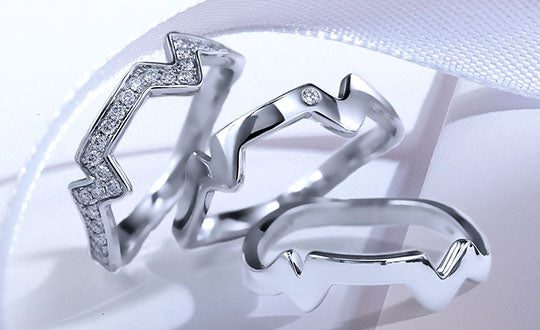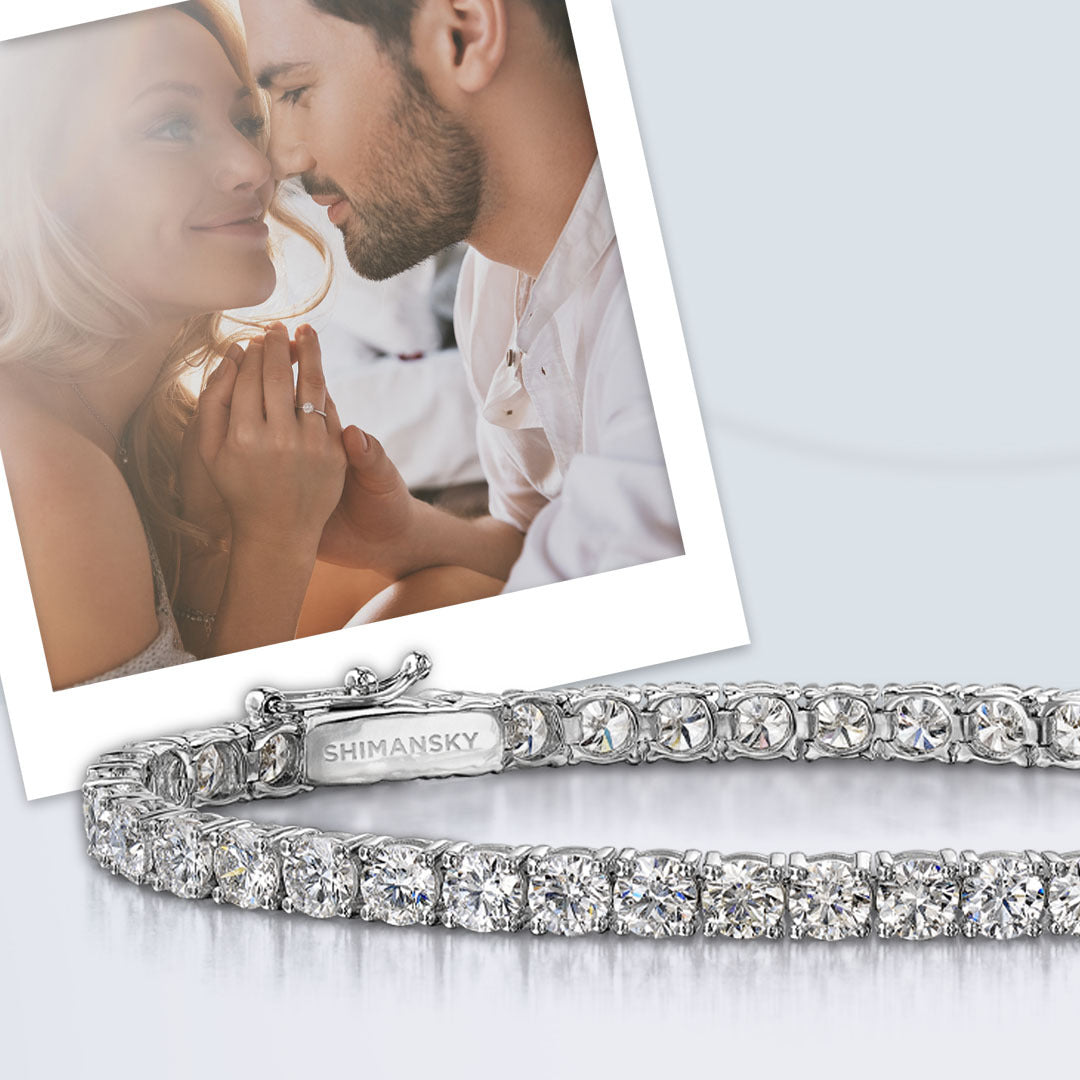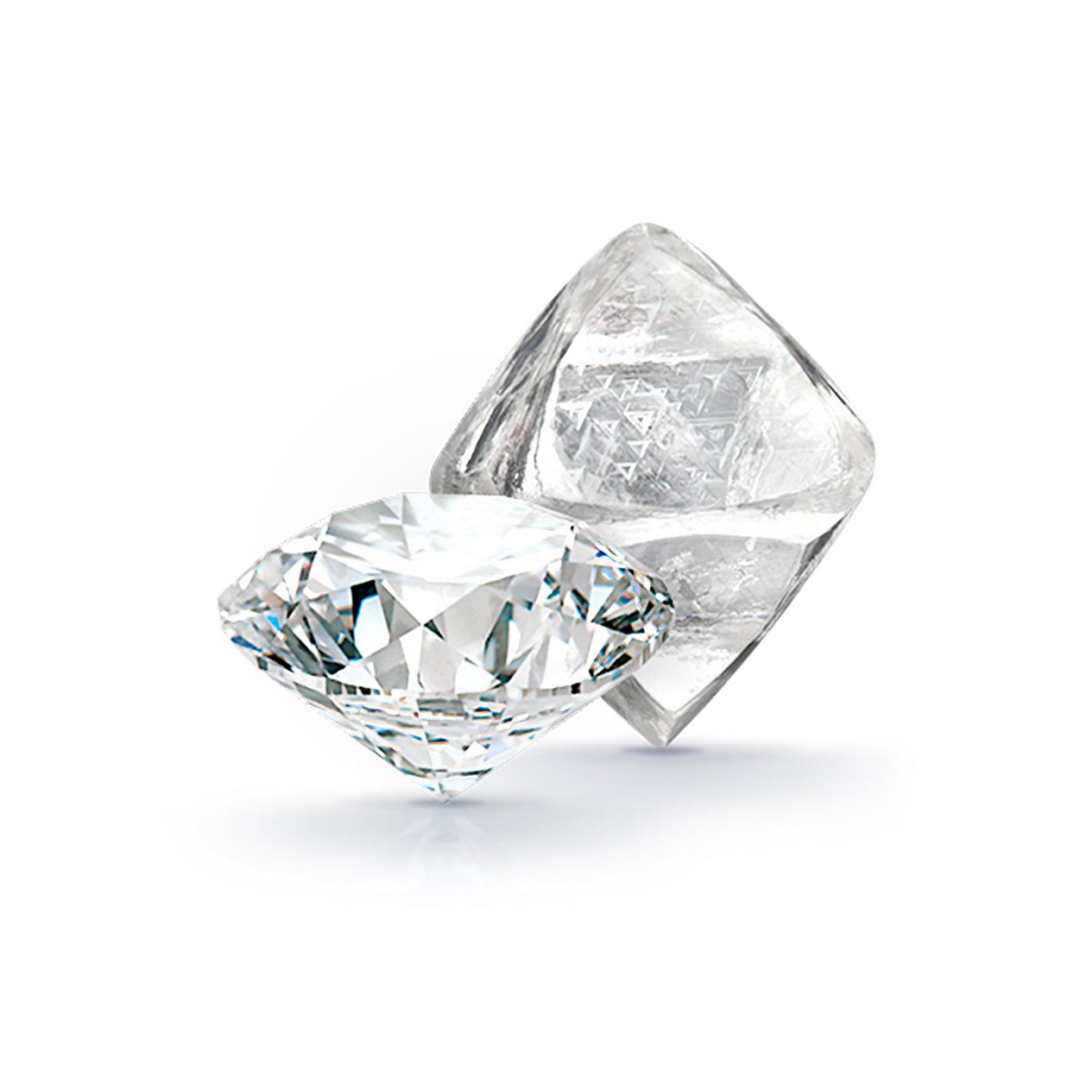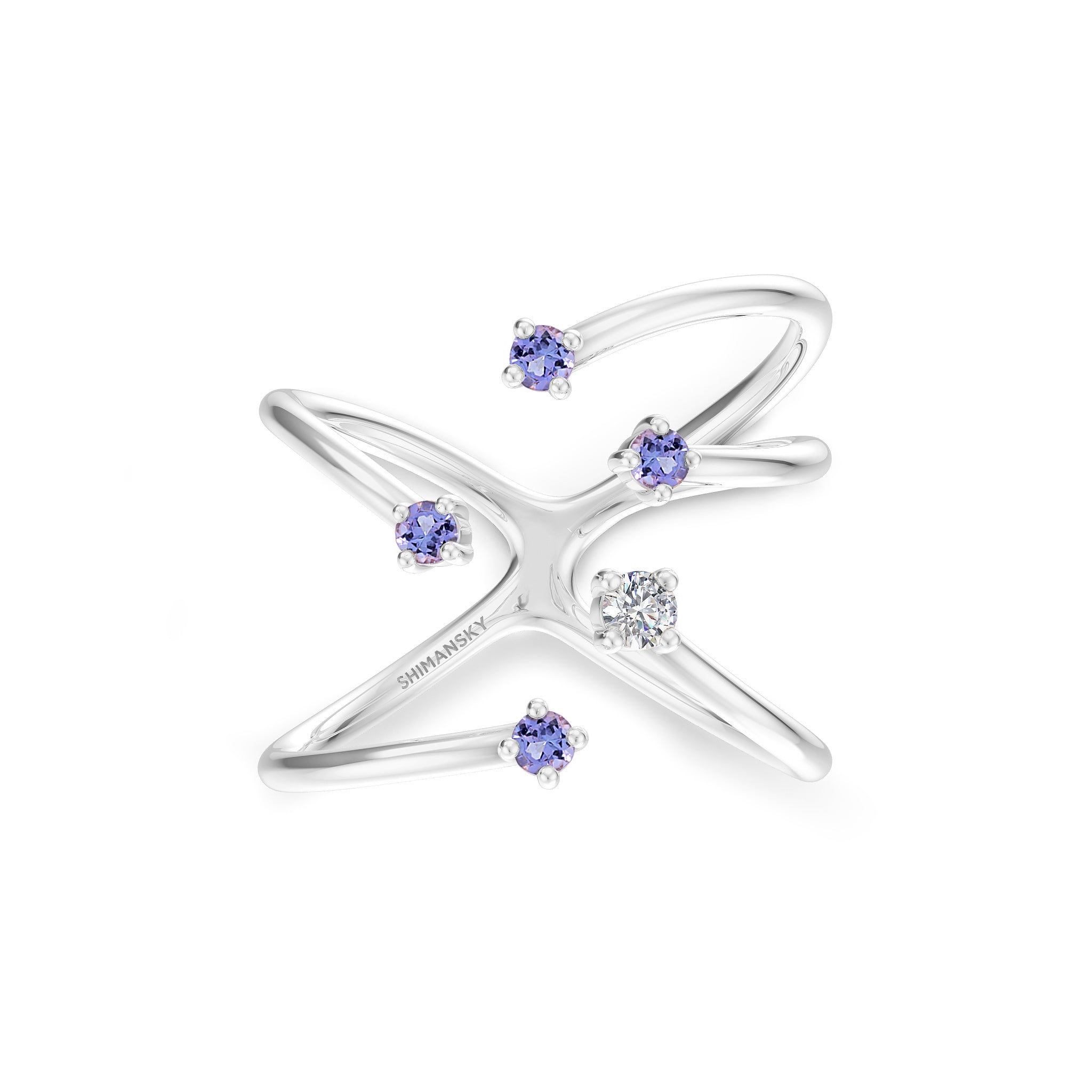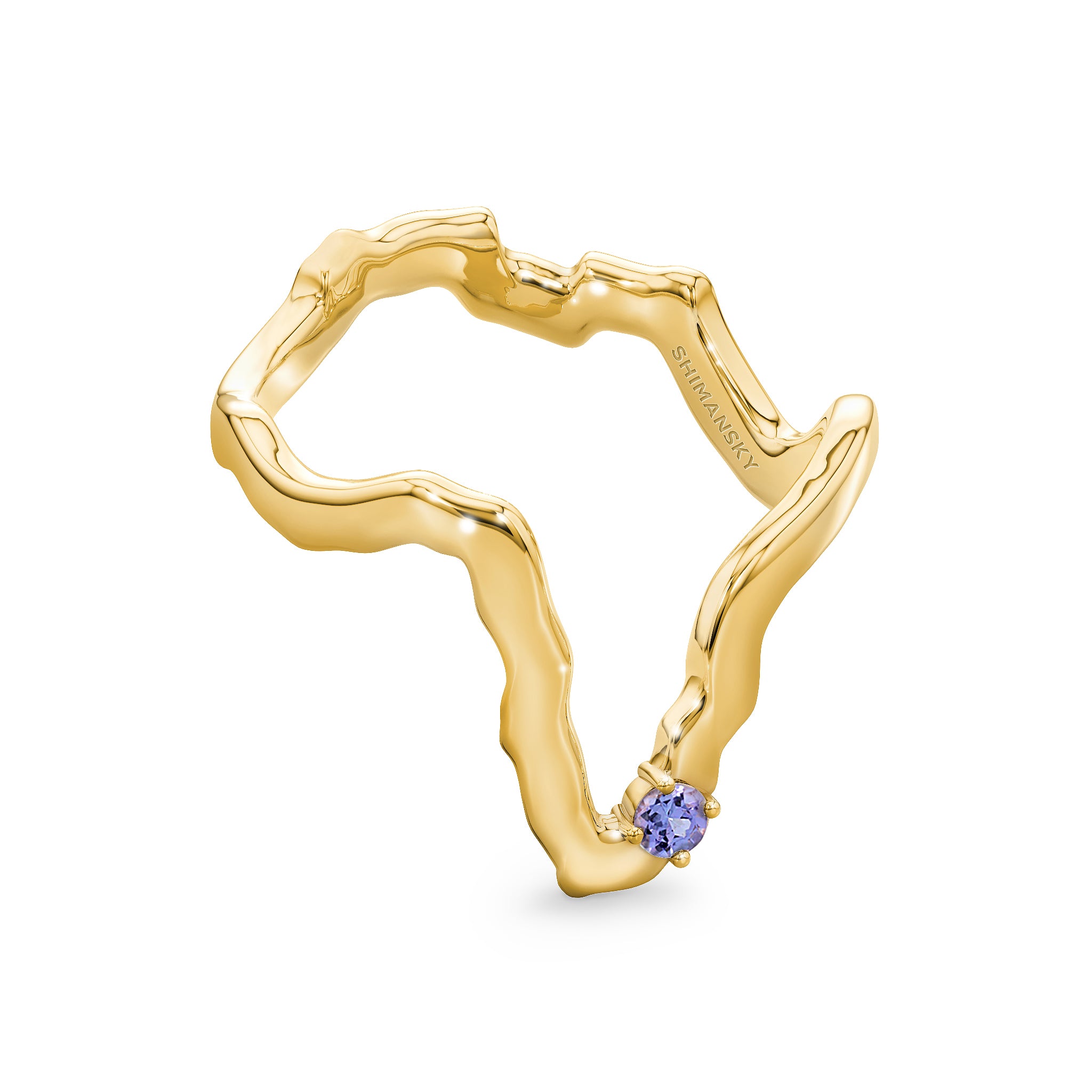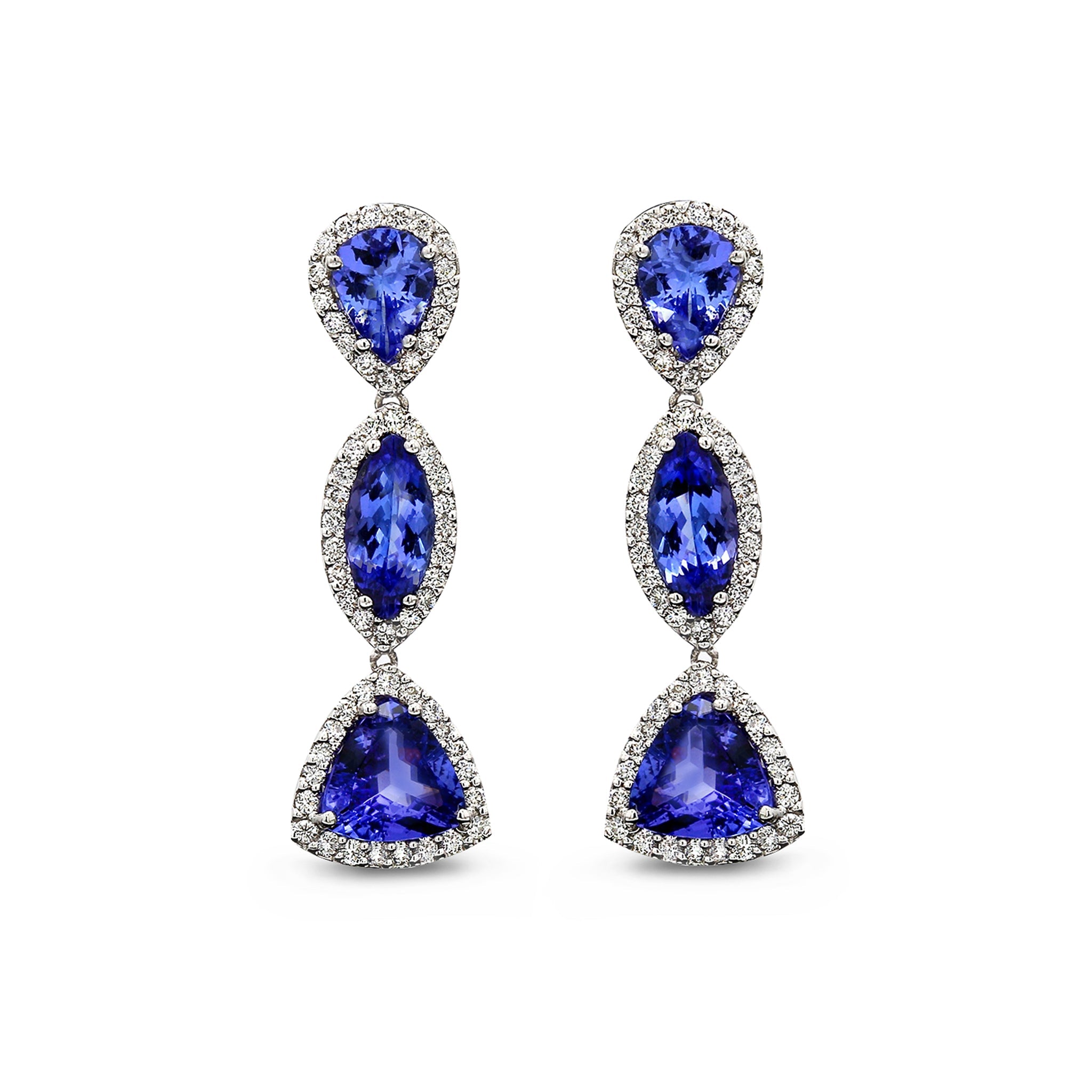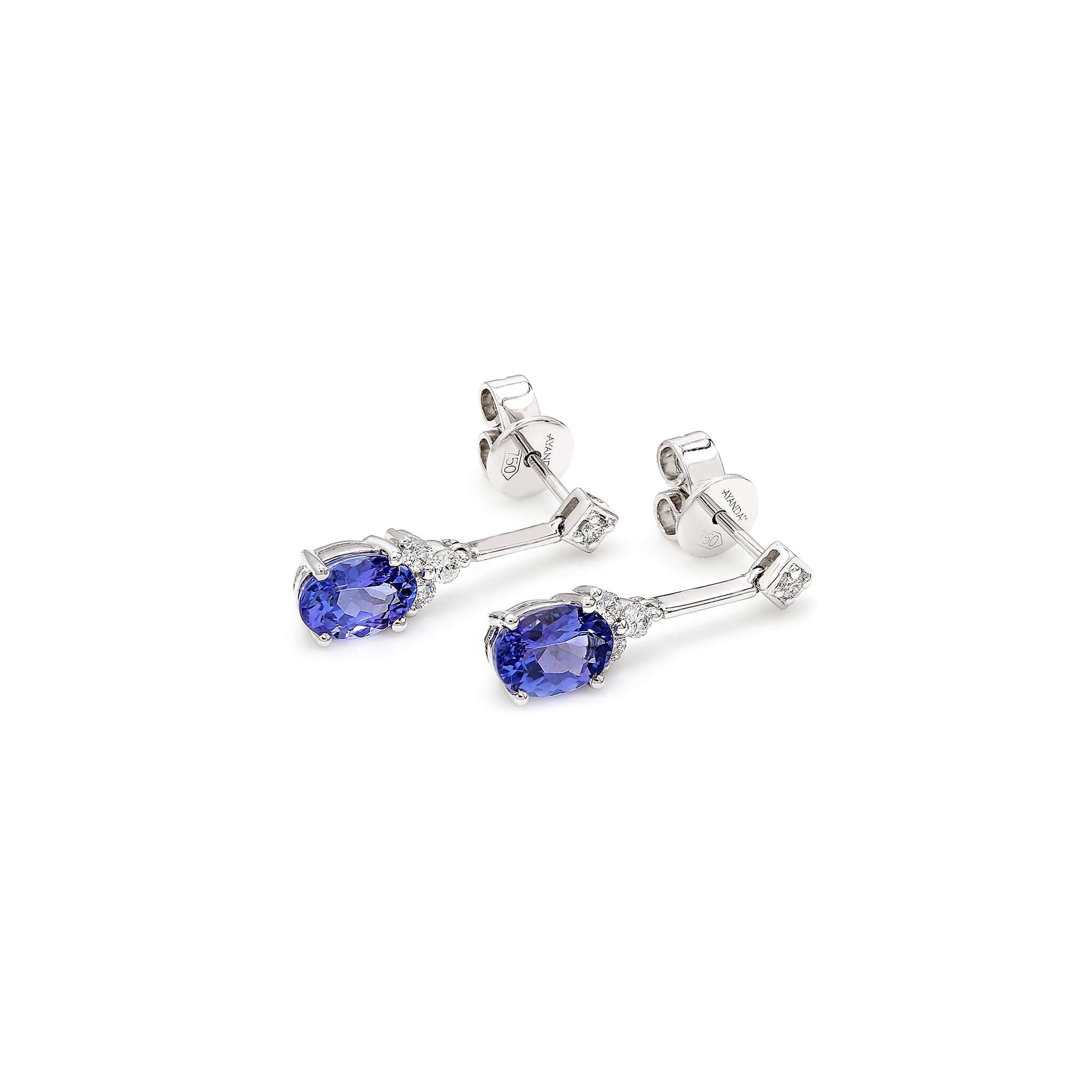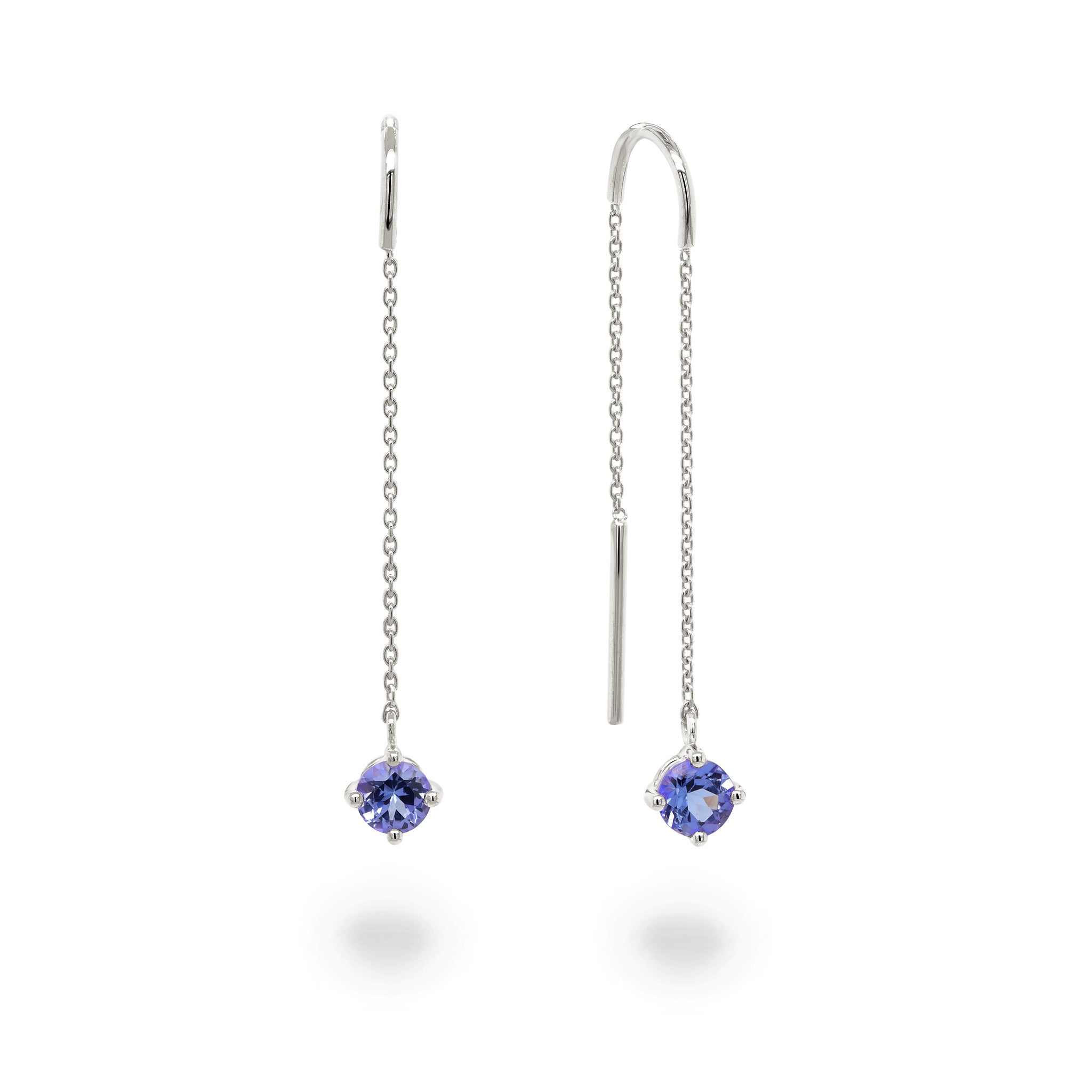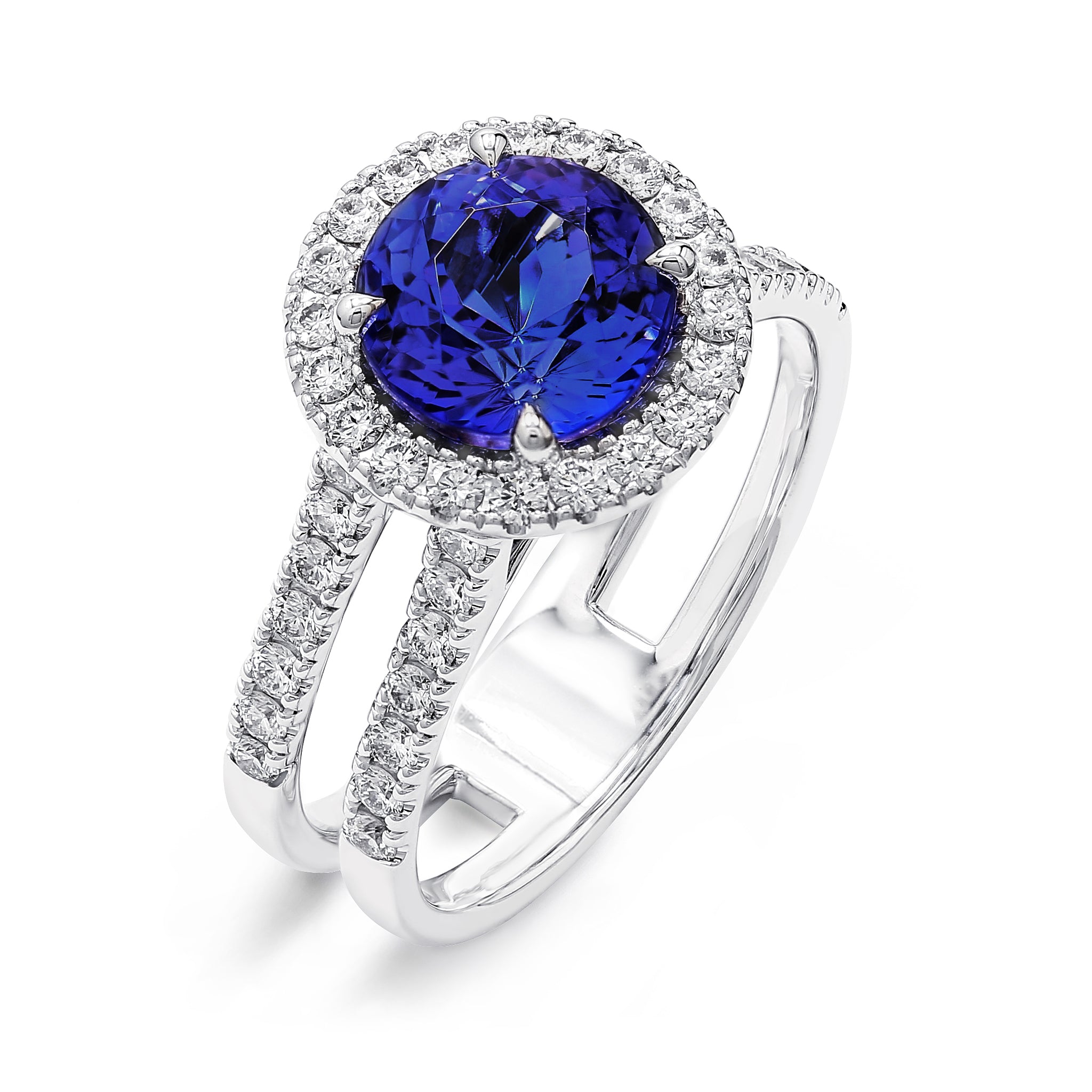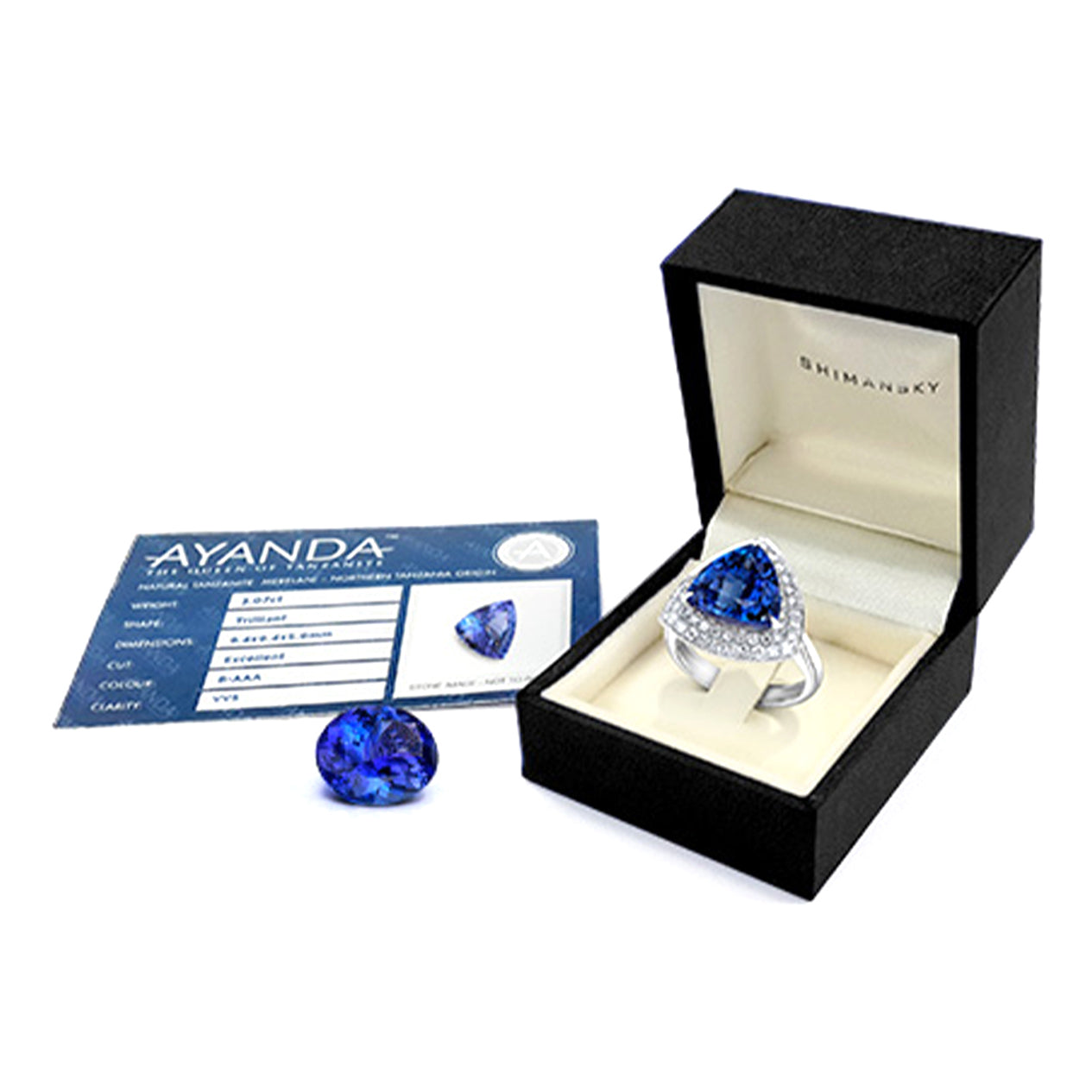
How to read a tanzanite certificate
Use this text to share information about your brand with your customers. Describe a product, share announcements, or welcome customers to your store.
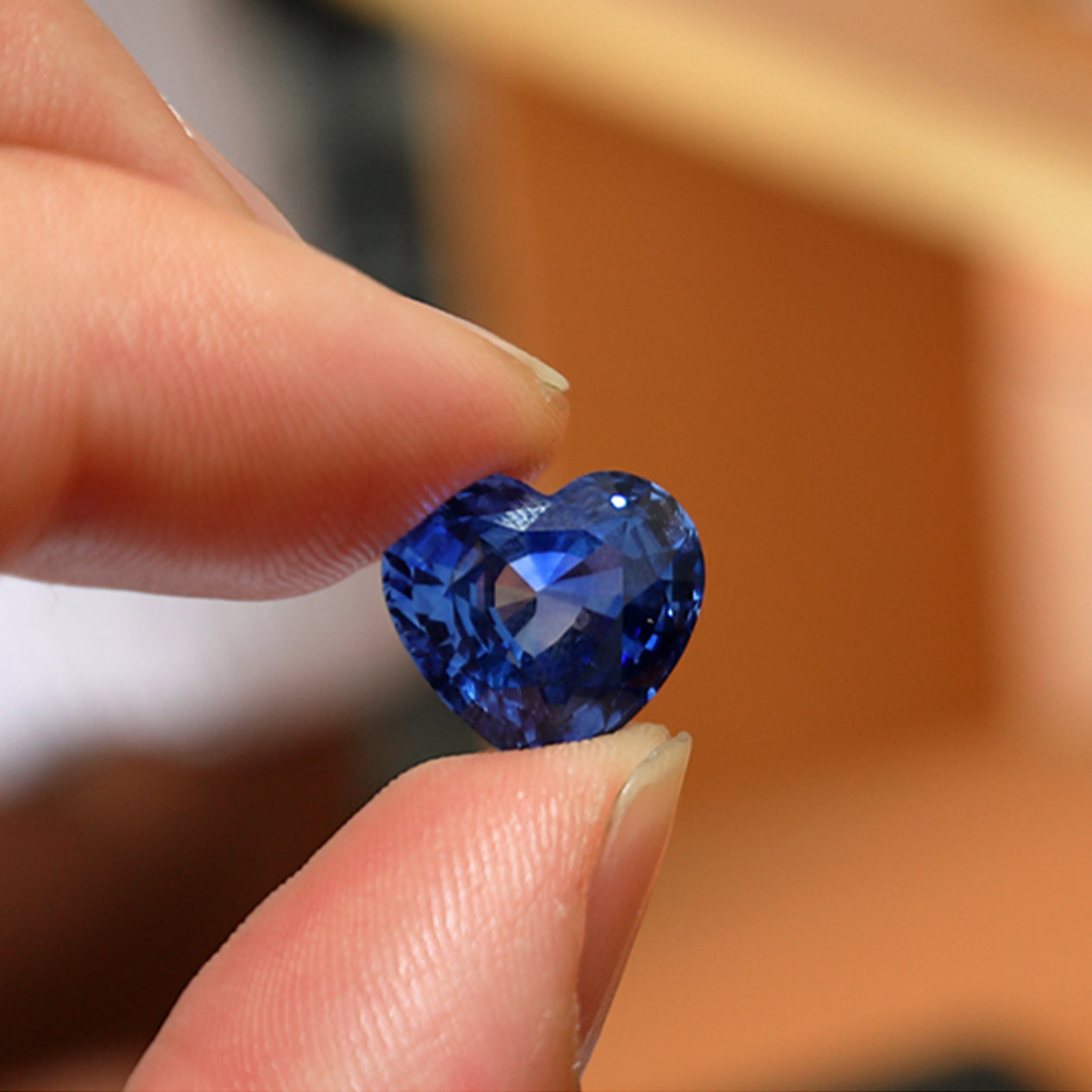
Stone number
The stone number is a unique number that guarantees the stone’s authenticity. Each tanzanite is given its own number, which it will retain forever. This number allows the owner to track the tanzanite’s origin, which ensures its ethical background and authenticity.

Weight
A tanzanite, like diamonds and other gemstones, has its weight measured in carats. One carat is equal to 200mg, or a fifth of a gram. Carat weight is a universal unit of measurement, and the higher the carat weight, the more valuable the tanzanite. Larger tanzanite weighing more than 5 carats is extremely rare, making it very sought-after and valuable.
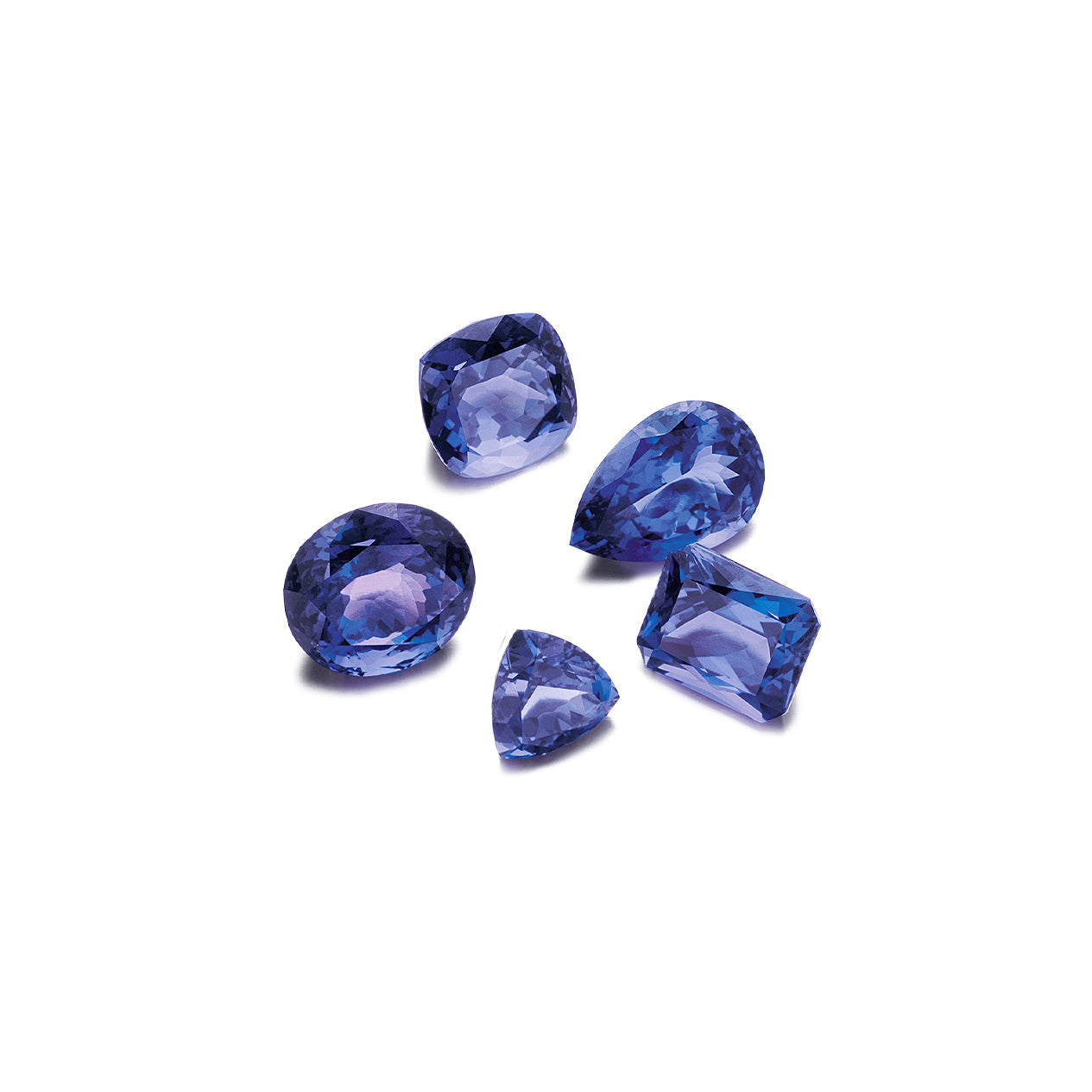
Shape
Shape is often mistaken for cut. The shape of a tanzanite refers to the actual shape into which the gemstone has been transformed, for example round, oval, cushion, trilliant, etc. Certain shapes like cushion and oval are traditionally more popular in Tanzanite than others of a more modern and unusual shape. Shape comes down to personal preference, and should be selected to match the receiver’s personal tastes.

Dimensions
The carat weight of a tanzanite indicates the gemstone’s weight or mass, but not its size. The dimensions of a tanzanite (length, width and height) are measured in millimeters and are recorded on the certificate.

Cut
Not to be confused with shape, the cut of a tanzanite refers to the various facets that have been cut into the gemstone by a master cutter. This, along with the shape of the stone, is determined by man, and not by nature. The cut determines how light enters and exists the tanzanite. The better the gemstone’s cut, the more brilliance it will have, and the more beautiful it will be. Tanzanite is available in a variety of cuts that are traditionally associated with diamonds.
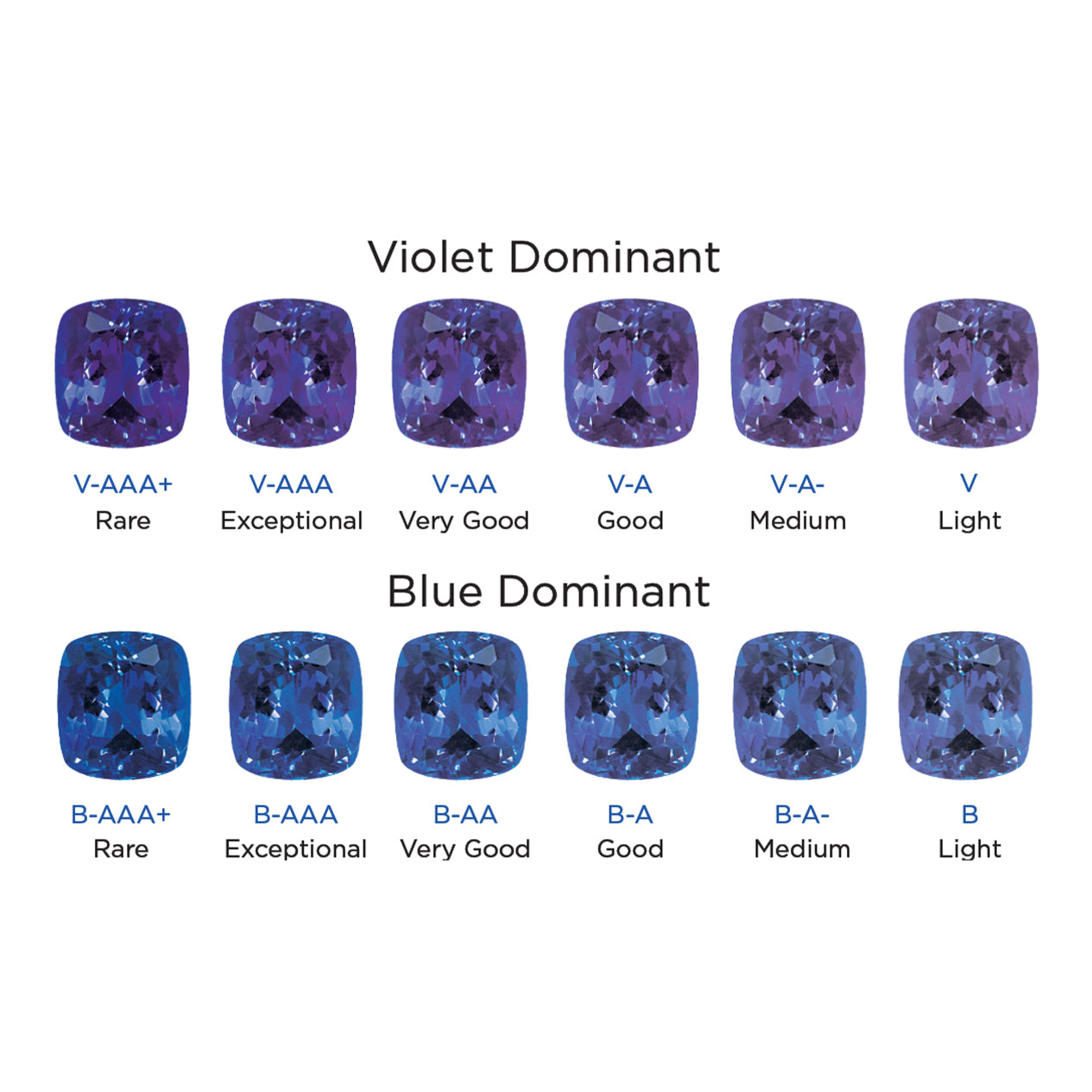
Colour
Tanzanite comes in various shades of blue and violet, from very pale lavender and medium blue (seen mostly in small stones), to intense deep blue and violet (seen mostly in larger tanzanite). The more vibrant and intense the colour of the tanzanite, the more rare it is, and the higher its value will be. Tanzanite is graded violet dominant to blue dominant, meaning it is more blue or more purple/violet in colour.

Clarity
Like diamonds, tanzanite also has inclusions, internal “flaws” that occur naturally, and that have a negative effect on the gemstone’s clarity grading. The more inclusions present in the tanzanite, the lower its clarity grading, and the lower the stone’s value. Tanzanite is graded from Internally Flawless (in which no inclusions are present), to Included (in which various, or large inclusions are present).
Featured collection
Tanzanite

